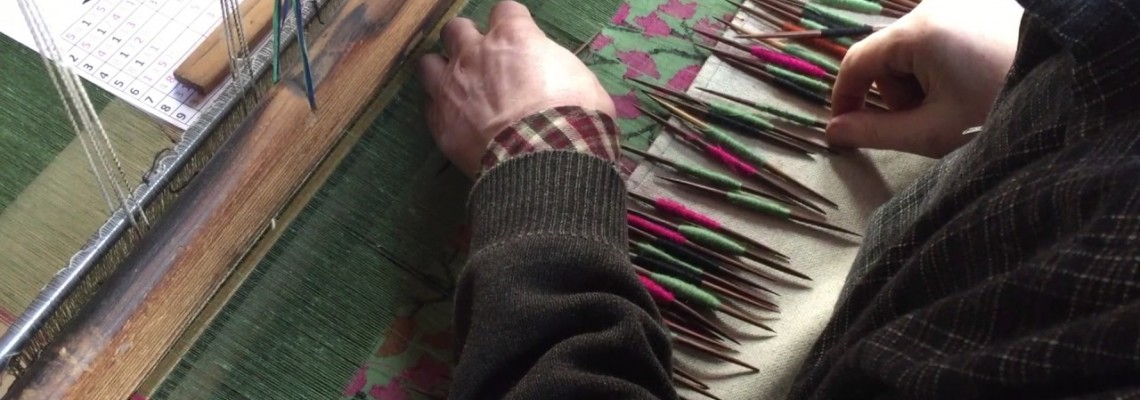
A look into how Kashmiri textiles are threaded together!
Textiles and embroidery of Kashmir are very unique. Often you must have heard “Heaven on Earth”, a title that the northernmost state of India has been relishing for years.
And every ounce of air in Kashmir makes a great case for it. Already endowed with a spectacle of natural beauty in all its magnificence, Kashmir is ranked first place on every travel list.
Apart from its natural beauty, there exists a beauty in the people of Kashmir. They carry with them a tradition so alluring and rich; it just cannot help but mesmerize the entire world.
We are talking about the textiles, embroidery and thread of Kashmir!
The textile tradition in Kashmir has a glorious history of the world-renowned tapestry.
May it be the Kani shawls or the Amlikar needlework, even today the hand-woven textile products are a speciality of the many Kashmiri skilled weavers.
A visit to Kashmir is enough to fall in love with Kashmiri textiles of all kinds. This rich Kashmir embroidery is seen on salwar kameez, sarees, purses, dupattas etc.
Textiles and Embroidery of Kashmir
Kashmir’s historical background:
In Kashmir, the earliest records of tapestry designs go back as far as the seventh century. In the sixteenth century Mughal period, however, there was a boom in the popularity of Kashmiri shawls in the country.
Primarily worn by Kings and royal courtiers, the uniquely gifted work of many weavers found its way beyond South Asia in this period.
It was only in the mid-1800s, the Kashmiri shawls became popular among the European elite, mainly the French. In the late eighteenth century, the industrial age appeared, which bestowed a certain global acknowledgement to this ancient art form.
The fabric behind a great shawl:
The shawls, which are known for their inimitable tapestry design, make use of a fibre commonly known among the natives as Pashm or Pashmina.
The fibre normally comes from the fleece of a wild Cashmere Asian mountain goat known by its scientific name as Capra hircus.
Kashmiri shawls feature intricate designs that date back centuries. Whether simple or elaborate, these shawls are a beautiful example of traditional craftsmanship.
There are a few common traits associated with Kashmiri embroidery. These include the use of beautiful flowers and leaves, as well as a focus on natural beauty.
The exquisite embroidery flows smoothly on the surface of the shawl, and the rich colours together become an integral part of the whole fabric.
The contrast between the different parts of the cape, mainly the gallery and the venue, is what catches our eye.
The artisans behind Kashmir’s textiles and embroidery work are some of the most skilled in the world.
Their skills have been passed down through countless generations, and there’s nothing they can’t handle.
Women have traditionally been responsible for every step of shawl-making, from designing to weaving. I enjoy cleaning raw fleece.

Leave a Comment